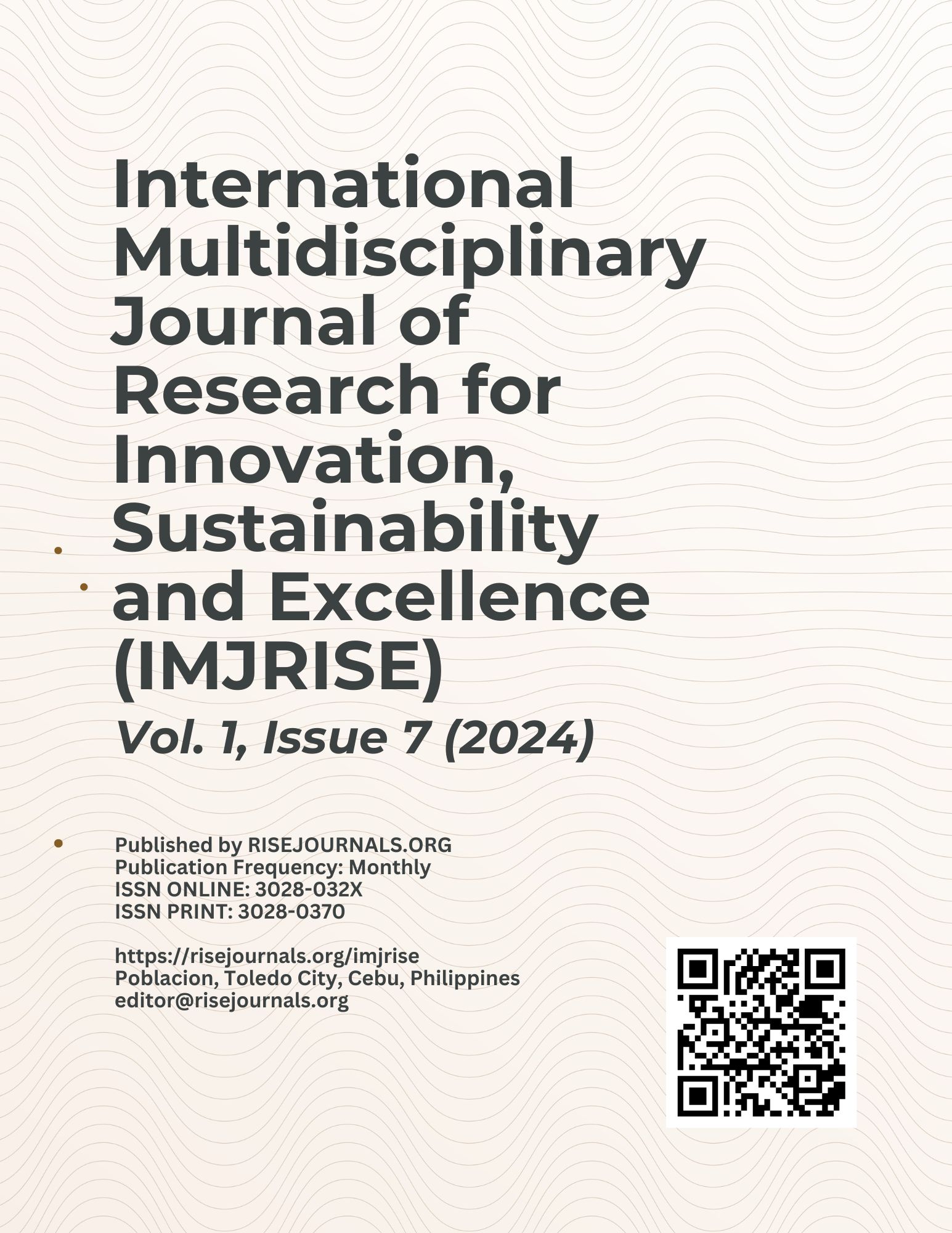Exploring the Impact of Language Exposure on Students' English Comprehension
Keywords:
English language exposure, language learning, language proficiency, social interactionAbstract
This research investigates the effectiveness of English language exposure in enhancing students' understanding of their English lessons. Drawing upon theories of language acquisition and empirical evidence, the study examines the impact of various factors such as social interaction, technology, media, home environment, and parental involvement on language learning outcomes. The literature review reveals that increased exposure to English language input outside the classroom positively correlates with improved language proficiency among students. Social interaction, including interactions with native speakers and peer discussions, plays a crucial role in language acquisition. Additionally, technology and media provide valuable resources for language practice and cultural immersion. Furthermore, the study highlights the significant influence of the home environment and parental involvement on students' language abilities. Parental engagement in language-related activities such as reading aloud and storytelling contributes significantly to children's language development. Understanding these factors is essential for educators to design effective language teaching approaches that integrate language exposure opportunities both inside and outside the classroom. By leveraging various channels of language exposure, educators can enhance students' language learning outcomes and overall proficiency.
References
Arriagada, A. M., Perry, J., Rawlings, L. B., Trias, J., & Zumaeta, M. (2018). Promoting early childhood development through combining cash transfers and parenting programs. World Bank Policy Research Working Paper, (8670).
Al Zoubi, S. M. (2018). The impact of exposure to English language on language acquisition. Journal of Applied Linguistics and Language Research, 5(4), 151-162.
Bruner, J. (1985). Child's talk: Learning to use language. Child Language Teaching and Therapy, 1(1), 111-114.
Canes, R. M., Cojuangco, F., & Kilag, O. K. (2024). The Enduring Significance of Chomsky's Language and Responsibility: Current Linguistic Perspectives. International Multidisciplinary Journal of Research for Innovation, Sustainability, and Excellence (IMJRISE), 1(2), 294-300.
Chomsky, N. (2006). Language and mind. Cambridge University Press.
Chomsky, N. (2009). Cartesian linguistics: A chapter in the history of rationalist thought. Cambridge University Press.
Gee, J. P. (2003). What video games have to teach us about learning and literacy. Computers in entertainment (CIE), 1(1), 20-20.
Genesee, F. (2009). Early childhood bilingualism: Perils and possibilities. Journal of Applied Research on Learning, 2(2), 1-21.
Genesee, F. (2015). Myths about early childhood bilingualism. Canadian Psychology/Psychologie Canadienne, 56(1), 6.
Genesee, F. (2010). Dual language development in preschool children. Young English language learners: Current research and emerging directions for practice and policy, 59-79.
Genesee, F. (2015). North America Rethinking early childhood education for English language learners: the role of language2. Early Childhood Education in English for Speakers of Other Languages, 20.
Genesee, F. (2019). Language development in simultaneous bilinguals: The early years. In International handbook of language acquisition (pp. 300-320). Routledge.
Genesee, F., & Nicoladis, E. (2007). Bilingual first language acquisition. Blackwell handbook of language development, 324-342.
Gie, L. (2007). Measurement of the impact of service learning on second year human resource management students at the Cape Peninsula University of Technology (Doctoral dissertation, Cape Peninsula University of Technology).
Godwin-Jones, R. (2014). Emerging technologies. Int. J. Comput. Sci. Bus. Inform, 9(1), 66-79.
González-Fernández, B., & Schmitt, N. (2017). Vocabulary acquisition. In The Routledge handbook of instructed second language acquisition (pp. 280-298). Routledge.
Hart, B., & Risley, T. R. (1995). Meaningful differences in the everyday. Experience of Young.
Hoff, E. (2006). How social contexts support and shape language development. Developmental review, 26(1), 55-88.
Huennekens, M. E. (2013). The cross-linguistic effects of dialogic reading on young dual language learners (Doctoral dissertation, Virginia Commonwealth University).
Ivars Olmedo, M. (2015). English language learning beyond the classroom walls.
Lee, C., & Barton, D. (2013). Language online: Investigating digital texts and practices. routledge.
Malbas, M., Dacanay, L., & Kilag, O. K. (2023). The Synergy Between Generative Grammars and Literary Style: A Chomskyan Perspective. Excellencia: International Multi-disciplinary Journal of Education (2994-9521), 1(5), 73-84.
Peters, E. (2018). The effect of out-of-class exposure to English language media on learners’ vocabulary knowledge. ITL-International Journal of Applied Linguistics, 169(1), 142-168.
Savignon, S. J. (2003). Teaching English as communication: A global perspective. World Englishes, 22(1), 55-66.
Schmitt, S. A., Simpson, A. M., & Friend, M. (2011). A longitudinal assessment of the home literacy environment and early language. Infant and Child Development, 20(6), 409-431.
Sénéchal, M., & LeFevre, J. A. (2002). Parental involvement in the development of children’s reading skill: A five‐year longitudinal study. Child development, 73(2), 445-460.
Skinner, B. F. (2019). The behavior of organisms: An experimental analysis. BF Skinner Foundation.
Steinberg, D., Nagata, H., & Aline, D. (2013). Psycholinguistics: Language, mind and world. Routledge.
Temple, B. A. (2007). Creating studios of literacy learning through the arts: A narrative case study in arts integration for urban high school education (Doctoral dissertation, The University of North Carolina at Charlotte).
Thorne, S. L., & Black, R. W. (2007). Language and literacy development in computer-mediated contexts and communities. Annual review of applied linguistics, 27, 133-160.
Uy, F., Cojuangco, F., Canes, R. M., Kilag, O. K., Abendan, C. F., & Dicdiquin, I. (2023). Syntax and Beyond: Investigating Chomsky's Universal Grammar in the Acquisition of Second Languages. Excellencia: International Multi-disciplinary Journal of Education (2994-9521), 1(5), 345-357.
Vygotsky, L. S. (1978). Mind in society: Development of higher psychological processes. Harvard university press.
Warschauer, M., & Meskill, C. (2013). Technology and second language teaching. In Handbook of undergraduate second language education (pp. 303-318). Routledge.


